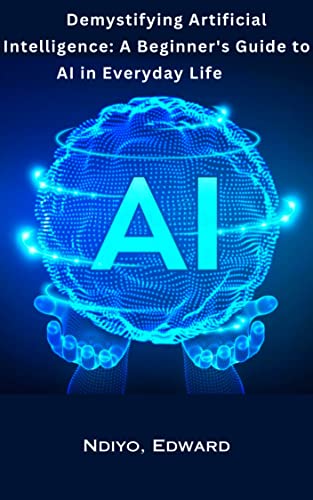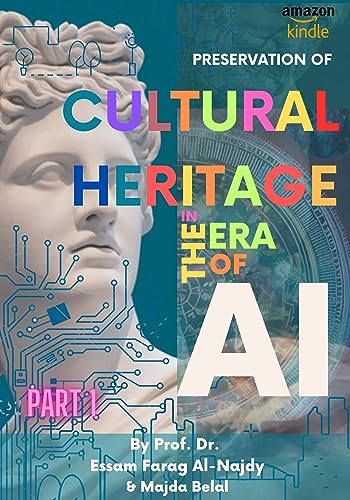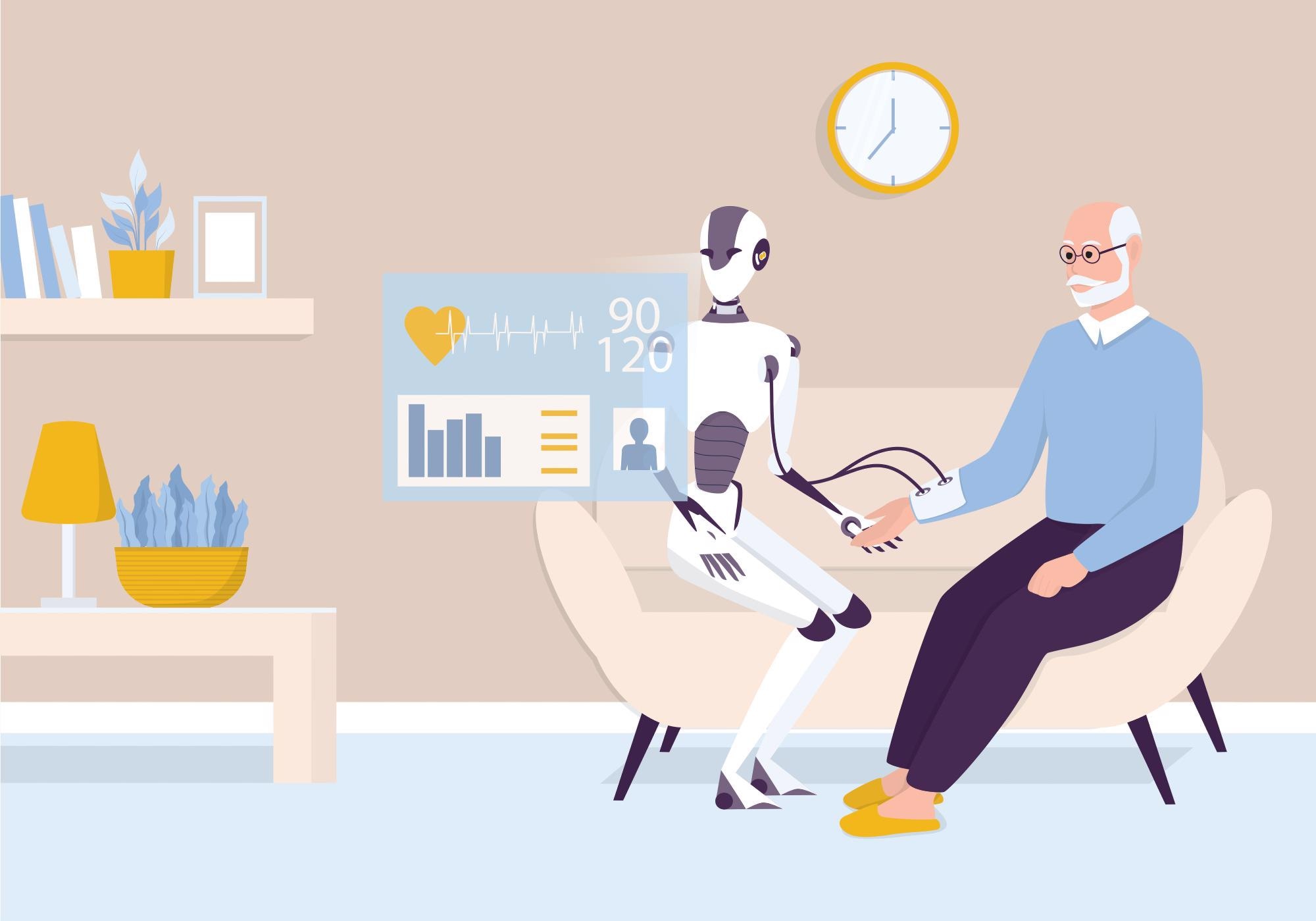Artificial Intelligence (AI) has become a buzzword in recent years, captivating the imagination of many. From self-driving cars to virtual assistants, AI is transforming various aspects of our lives. But what exactly is AI, and how does it work? If you’re new to this exciting field, this beginner’s guide aims to demystify AI, explaining its fundamentals and real-world applications.
- Introduction to Artificial Intelligence
What is AI?
Artificial Intelligence, often abbreviated as AI, is the simulation of human intelligence in machines that are programmed to think, learn, and problem-solve like humans. It encompasses a wide range of technologies and applications, aiming to create systems that can perform tasks that typically require human intelligence. These tasks include understanding natural language, recognizing patterns, making decisions, and even self-improvement over time.
A Brief History of AI
The concept of AI dates back to ancient myths and folklore, where machines or beings with human-like intelligence were imagined. However, the modern journey of AI began in the mid-20th century. In 1956, the term “artificial intelligence” was coined at the Dartmouth Conference, marking the birth of the field. Early AI pioneers, such as Alan Turing, John McCarthy, and Marvin Minsky, laid the groundwork for AI research.
Despite initial enthusiasm, AI progress faced several setbacks in the form of the “AI winter,” periods of reduced funding and interest. However, AI research surged forward in the 21st century, driven by advances in computing power, data availability, and algorithmic innovations.
Today, AI is a thriving field with applications in various industries, from healthcare to finance and entertainment. It’s no longer a matter of if AI will impact our lives but how profoundly it will do so.
- Types of Artificial Intelligence
Narrow AI (Weak AI)
Narrow AI, also known as Weak AI, refers to AI systems that are designed and trained for a specific task. These systems excel at performing a particular job but lack the general intelligence and understanding that humans possess. Common examples of narrow AI include virtual assistants like Siri or Alexa, chatbots for customer support, and recommendation algorithms used by streaming platforms.
Narrow AI is highly specialized and can’t perform tasks beyond their predefined scope. They rely on large datasets and patterns to make decisions within their domain. While they have limitations, narrow AI has already made significant impacts in various industries.
General AI (Strong AI)
General AI, or Strong AI, represents a hypothetical form of artificial intelligence that possesses human-like intelligence and cognitive abilities. Unlike narrow AI, which is tailored to specific tasks, general AI would have the capacity to understand and learn from any intellectual task that a human being can.
The concept of general AI raises exciting possibilities and challenges. Such a system could engage in reasoning, problem-solving, and learning across diverse domains, making it a powerful tool for tackling complex problems. However, building a strong AI system remains a daunting challenge and a topic of intense research and debate.
Artificial Superintelligence
Artificial Superintelligence (ASI) is an even more advanced concept, where AI surpasses human intelligence in every aspect. ASI would possess not only human-like cognitive abilities but also the potential for creativity, emotional intelligence, and problem-solving beyond the reach of any human. The emergence of ASI raises profound ethical and existential questions, making it a topic of both fascination and concern in the AI community.
- Machine Learning: The Heart of AI
Supervised Learning
Supervised learning is a fundamental branch of machine learning where the model is trained on a labeled dataset. This means that the algorithm is provided with input-output pairs, allowing it to learn the mapping between inputs and desired outputs. The goal is for the model to make accurate predictions or classifications when presented with new, unseen data.
In supervised learning, the model iteratively adjusts its parameters to minimize the difference between its predictions and the actual outcomes in the training data. Common applications of supervised learning include image recognition, spam email detection, and predicting housing prices.
Unsupervised Learning
Unsupervised learning, in contrast, involves training a model on unlabeled data. The algorithm’s objective is to find patterns, structures, or clusters within the data without explicit guidance on what to look for. This makes unsupervised learning particularly useful for tasks like data exploration, dimensionality reduction, and anomaly detection.
One popular unsupervised learning technique is clustering, which groups similar data points together. Another is dimensionality reduction, where the goal is to represent complex data in a simpler form while preserving essential information. Unsupervised learning has applications in customer segmentation, recommendation systems, and data compression.
Reinforcement Learning
Reinforcement learning is a type of machine learning where an agent interacts with an environment and learns to make sequences of decisions to maximize a cumulative reward. Unlike supervised learning, reinforcement learning doesn’t rely on labeled data but instead uses a trial-and-error approach.
In reinforcement learning, an agent takes actions in an environment, receives feedback in the form of rewards or penalties, and learns to optimize its actions over time. This paradigm is especially suitable for tasks like game playing, autonomous robotics, and optimizing complex systems.
- Deep Learning: Unraveling Neural Networks
What Are Neural Networks?
Neural networks are a class of machine learning models inspired by the structure and function of the human brain. They consist of interconnected nodes (artificial neurons) organized in layers. Each connection between nodes has a weight that determines the strength of the connection.
These networks are capable of learning complex patterns and representations from data through a process known as training. During training, neural networks adjust their internal weights based on the input data and the desired output, gradually improving their ability to make accurate predictions or classifications.
Neural networks have revolutionized AI, particularly in the field of deep learning, due to their capacity to handle large and complex datasets. They have enabled breakthroughs in areas such as computer vision, natural language processing, and speech recognition.
Convolutional Neural Networks (CNNs)
Convolutional Neural Networks (CNNs) are a specialized type of neural network designed for tasks involving grid-like data, such as images and videos. They excel at image recognition and have been crucial in the development of facial recognition technology, object detection systems, and even self-driving cars.
CNNs use convolutional layers to scan and extract features from input data, allowing them to learn hierarchical representations of objects and patterns. This makes them highly effective in tasks where spatial relationships and local patterns matter.
Recurrent Neural Networks (RNNs)
Recurrent Neural Networks (RNNs) are a class of neural networks well-suited for sequences of data, such as time series, natural language, and speech. RNNs are designed to handle data with temporal dependencies, where the order of elements matters.
What sets RNNs apart is their ability to maintain internal memory, making them capable of capturing and learning patterns in sequences. This memory allows RNNs to perform tasks like language translation, sentiment analysis, and speech generation.
- AI in Everyday Life
Virtual Assistants
Virtual assistants like Siri, Alexa, and Google Assistant have become integral parts of many people’s lives. These AI-powered systems use natural language processing and machine learning to understand and respond to user queries. They can perform tasks such as setting reminders, answering questions, and controlling smart home devices.
Virtual assistants continue to evolve, becoming more context-aware and capable of handling complex conversational interactions. They have found applications in customer service, where chatbots provide 24/7 support, improving efficiency and user satisfaction.
Recommender Systems
Recommender systems, often encountered on streaming platforms, e-commerce websites, and social media, leverage AI algorithms to suggest content or products tailored to individual preferences. These systems analyze user behavior, historical data, and similar user profiles to make personalized recommendations.
Recommender systems enhance user experiences by helping users discover new music, movies, products, or articles that align with their interests. They also play a vital role in driving user engagement and sales for businesses.
Autonomous Vehicles
Self-driving cars represent one of the most exciting applications of AI in transportation. These vehicles use a combination of sensors, cameras, and AI algorithms to navigate and make decisions on the road. AI-powered autonomous vehicles have the potential to reduce accidents, improve traffic flow, and make transportation more accessible.
Companies like Tesla, Waymo, and Uber have made significant strides in autonomous vehicle technology, conducting extensive testing and trials. However, achieving widespread adoption and ensuring safety remain ongoing challenges.
- AI in Healthcare
Disease Diagnosis
AI has made significant advancements in the field of medical imaging. Deep learning models, particularly convolutional neural networks (CNNs), have shown remarkable accuracy in detecting and diagnosing diseases from medical images such as X-rays, MRIs, and CT scans.
These AI systems can assist radiologists in identifying conditions like cancer, fractures, and neurological disorders. By providing faster and more accurate diagnoses, AI contributes to improved patient outcomes.
Drug Discovery
The drug discovery process is notoriously time-consuming and costly. AI is revolutionizing this field by accelerating the identification of potential drug candidates. Machine learning models analyze vast datasets of chemical compounds and their interactions, predicting which molecules are likely to be effective in treating specific diseases.
AI-driven drug discovery has the potential to bring life-saving medications to market faster and reduce the overall cost of drug development.
Personalized Medicine
Personalized medicine tailors medical treatment to an individual’s genetic makeup and specific health characteristics. AI plays a crucial role in this emerging field by analyzing genetic data and patient histories to determine the most effective treatments and therapies for individuals.
By providing targeted and customized healthcare solutions, personalized medicine has the potential to enhance treatment outcomes and minimize adverse side effects.
- AI in Finance
Algorithmic Trading
Algorithmic trading involves using AI algorithms to execute large and complex trading strategies in financial markets. AI-driven trading systems analyze market data in real-time, identifying trading opportunities and executing orders at high speeds.
Algorithmic trading has the potential to enhance market liquidity, reduce transaction costs, and mitigate the impact of human emotions on trading decisions. However, it also raises concerns about market stability and fairness.
Fraud Detection
AI-powered fraud detection systems are essential for financial institutions and e-commerce platforms. These systems use machine learning to analyze transaction data, identify patterns of fraudulent behavior, and flag suspicious activities in real-time.
By detecting and preventing fraudulent transactions, AI helps protect both businesses and consumers from financial losses and security breaches.
Customer Service Chatbots
Many financial institutions and businesses use AI-driven chatbots to provide customer support and assistance. These chatbots can handle routine inquiries, assist with account management, and even provide financial advice.
Chatbots improve customer service efficiency by providing instant responses and freeing up human agents to handle more complex issues. They are available 24/7, ensuring that customers can access assistance whenever they need it.
- Ethical Considerations in AI
Bias and Fairness
One of the significant challenges in AI is addressing bias and fairness issues. AI systems can inadvertently perpetuate or even exacerbate biases present in training data, leading to discriminatory outcomes. This can manifest in areas such as hiring, lending, and criminal justice.
Efforts are underway to develop tools and guidelines for identifying and mitigating bias in AI algorithms. Ensuring fairness and equity in AI applications is crucial for building trust and avoiding harmful consequences.
Privacy Concerns
AI relies heavily on data, which raises concerns about privacy. As AI systems collect, analyze, and share vast amounts of personal information, questions about data security and consent become paramount.
Regulations such as the General Data Protection Regulation (GDPR) in Europe aim to protect individuals’ data rights and hold organizations accountable for responsible data handling. Privacy-conscious AI design is essential to maintain public trust and adhere to legal requirements.
AI and Jobs
The impact of AI on the job market is a topic of ongoing debate. While AI can automate routine and repetitive tasks, it also creates new opportunities and job roles in AI development, data science, and AI ethics.
Efforts to address potential job displacement include upskilling and reskilling programs to prepare the workforce for AI-driven changes. Collaborative efforts between AI developers, businesses, and policymakers are necessary to ensure a smooth transition in the job market.
- The Future of AI
AI and Creativity
AI is expanding its capabilities into creative domains. Generative AI models, such as GPT-3, can generate text, music, art, and even code. These models have the potential to assist and inspire human creativity in unprecedented ways.
Artificial intelligence is also being used in fields like film production, where AI can assist in tasks like scriptwriting, video editing, and visual effects generation.
Quantum Computing and AI
Quantum computing, a rapidly advancing field, holds promise for AI by dramatically increasing computing power. Quantum computers can solve complex AI optimization problems exponentially faster than classical computers, opening up new possibilities in AI research and applications.
Quantum AI may lead to breakthroughs in areas such as drug discovery, materials science, and optimization tasks that were previously computationally infeasible. It’s an exciting synergy that could revolutionize AI and its applications.
AI Ethics and Regulation
As AI continues to advance and permeate various aspects of society, the need for ethical guidelines and regulations becomes increasingly apparent. Ensuring that AI is developed and used responsibly is crucial to mitigate risks and maximize benefits.
Governments, organizations, and the AI community are working together to establish ethical frameworks and regulations that address issues like bias, privacy, and transparency. The aim is to strike a balance between innovation and safety, promoting the responsible deployment of AI technologies.
- Getting Started with AI
If you’re inspired to explore the world of AI, there are numerous resources and avenues available to get started:
Online Courses and Tutorials: Platforms like Coursera, edX, and Udacity offer introductory courses on AI and machine learning.
Books: There are excellent books on AI for beginners, such as “Artificial Intelligence: A Guide to Intelligent Systems” by Michael Negnevitsky and “AI: A Very Short Introduction” by Margaret A. Boden.
Open Source Tools: Familiarize yourself with AI libraries and frameworks like TensorFlow and PyTorch, which provide hands-on experience in building AI models.
Join the AI Community: Attend AI meetups, conferences, and forums to network with like-minded individuals and stay updated on the latest developments in AI.
Hands-On Projects: Start small by working on your AI projects. Kaggle offers datasets and competitions for practicing data science and machine learning.
In conclusion, Artificial Intelligence is no longer a distant concept from science fiction; it’s a reality that’s already reshaping our world. This beginner’s guide has provided you with a solid foundation to understand AI’s fundamentals and its diverse applications across industries.
As you embark on your journey into the world of AI, remember that it’s a field characterized by continuous innovation and discovery. Whether you’re interested in using AI to improve healthcare, revolutionize finance, or enhance everyday life, there are boundless opportunities to make a positive impact on society while exploring the limitless potential of artificial intelligence. So, dive in, learn, create, and be part of the exciting future that AI promises to deliver.





